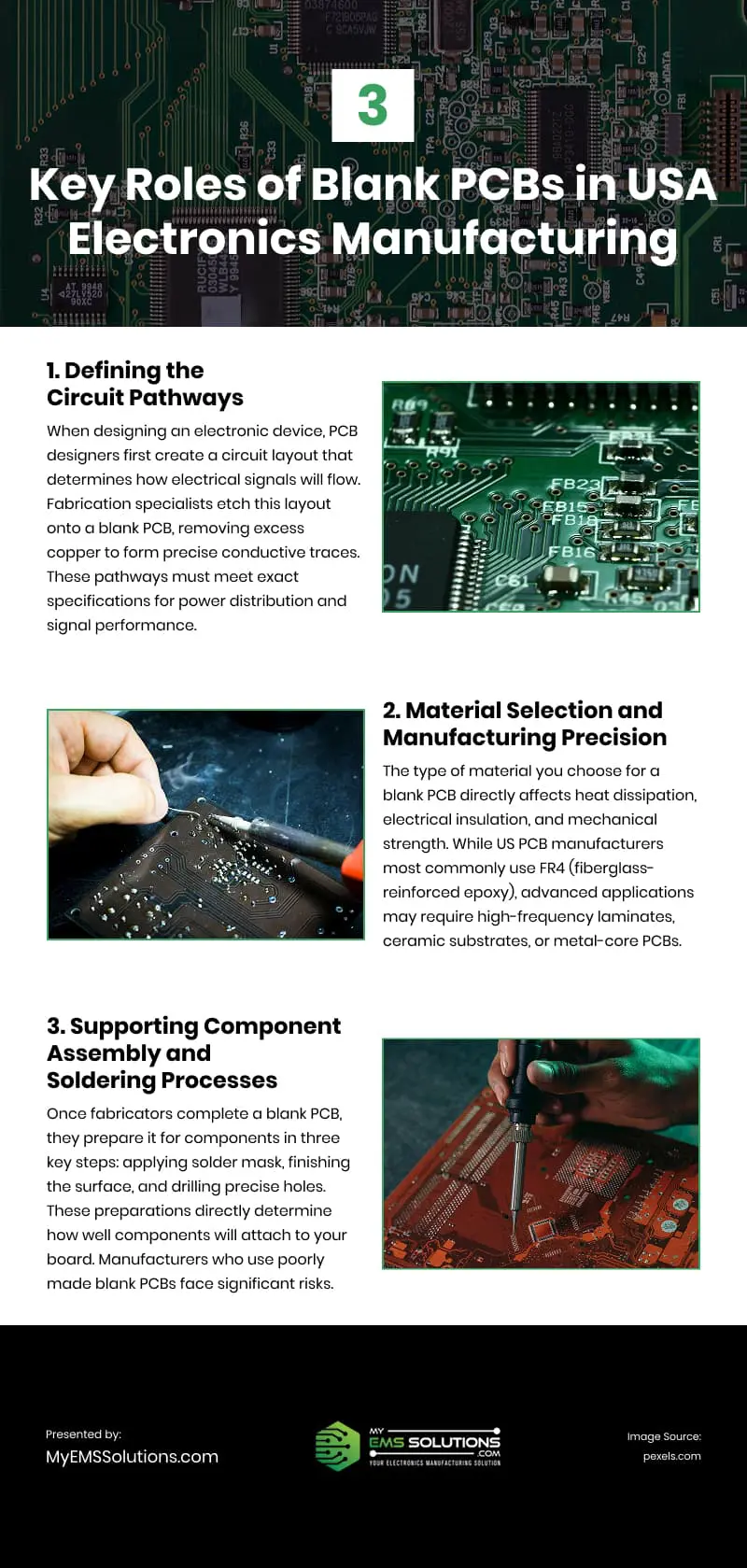
Every electronic device, from smartphones to advanced medical equipment, begins with a blank printed circuit board (PCB)—the silent backbone that powers performance. In U.S. electronics manufacturing, the quality of blank PCBs is critical, as these boards form the foundation for precise signal flow, reliable power distribution, and the device’s overall durability. The process starts with designing circuit pathways etched onto the blank PCB to guide electrical signals with pinpoint accuracy. Materials matter, too—while FR4 is a standard choice for its insulation and strength, more advanced needs may require high-frequency laminates, ceramic, or metal-core options. These materials impact everything from heat management to mechanical stability. After the blank PCB is fabricated, it goes through a series of essential steps—like applying solder masks, surface finishes, and drilling holes—that prepare it for component assembly. These stages are critical to ensuring proper alignment, soldering, and long-term reliability. Poor-quality PCBs can lead to costly failures during production or in the field, which is why U.S. manufacturers place such high importance on precision, material selection, and process control. In essence, a well-made blank PCB isn’t just a component—it’s the heartbeat of dependable electronics across industries.
source: https://www.myemssolutions.com/usa-electronics-manufacturing-depends-on-quality-blank-pcbs/
Comments
Download this infographic.
